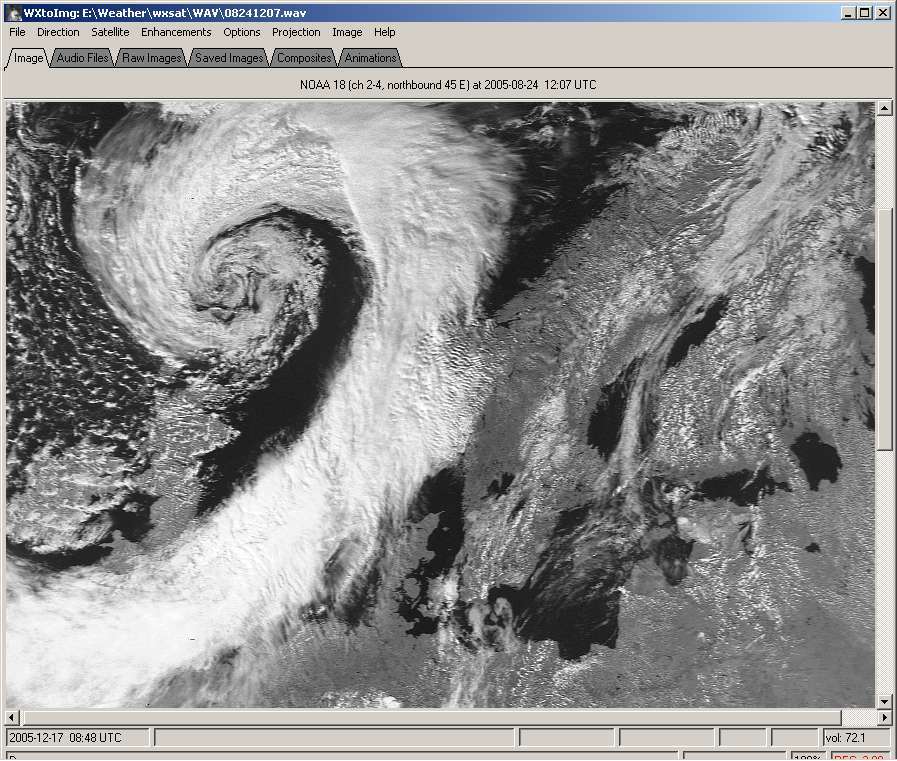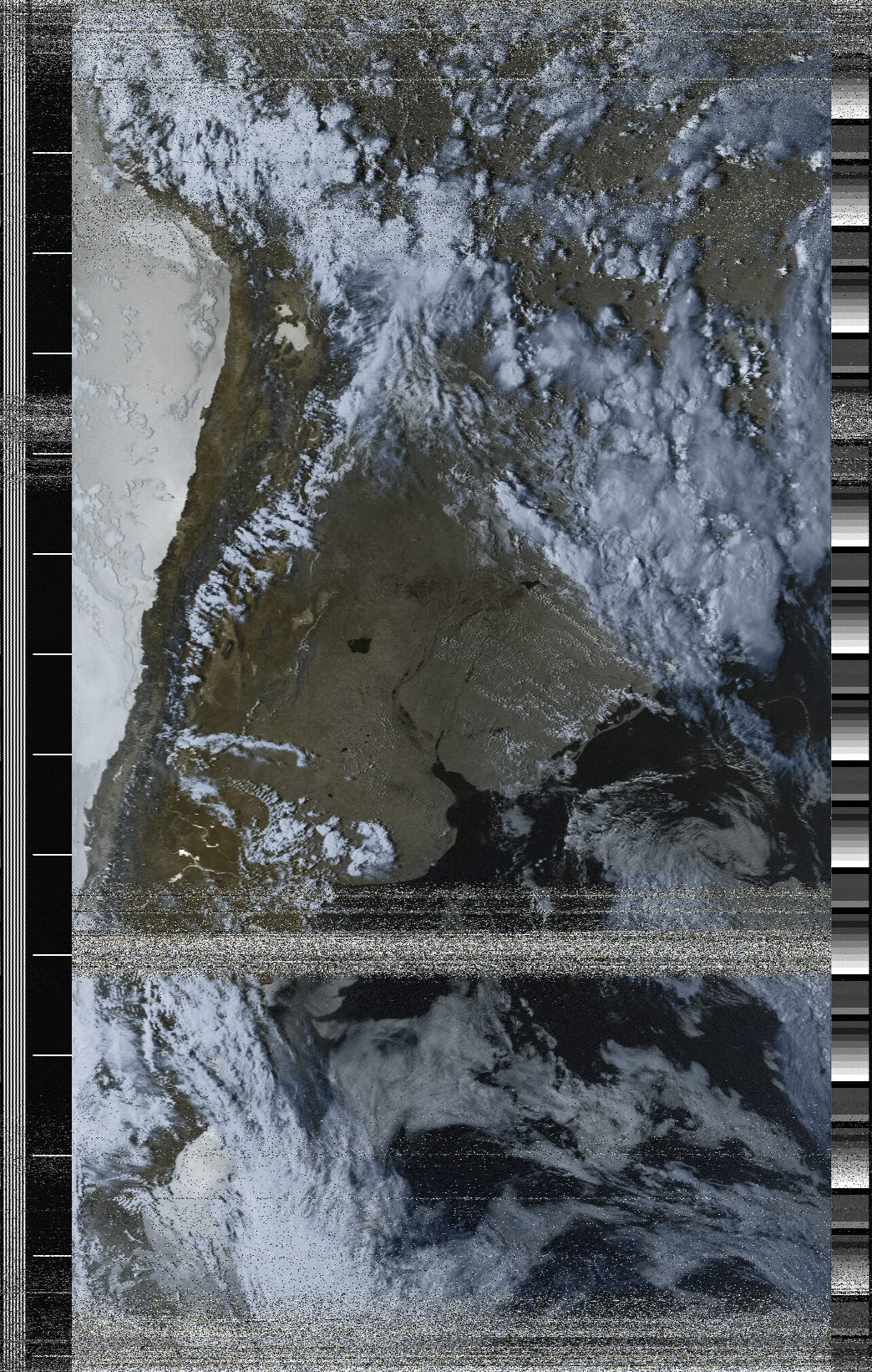
Step wedge regions display very cold infrared cloud top temperatures associated with thunderstorms and frontal systems in 5 degree increments down to -60 C. The freezing level is easily determined, an advantage for aviation users concerned with icing. It enhances low and middle level clouds common along the Pacific Coast of North America in two sep¬ arate gray shade ranges. It provides good enhancement of a wide variety of cloud types, but is somewhat complex, and may be difficult to use at first. HE The NOAA HE enhancement is used principally by weather offices in the western United States. This enhancement option is temperature nor¬ malised. This enhancement option is temperature normalised. Highlights certain temperatures in the eye and eye wall of the storm system which are known to be related to the intensity of the hurricane. Otherwise, it is the same as the MB enhancement. The middle cloud range is somewhat broader than the MB, and enhancement of details is minimised. An additional improvement is better delineation of warm low clouds (30C to 7C). It is intended for warm season use, and provides improved enhancement within the gray "step wedges" that depict "warm top" convection. MD The NOAA MD enhancement is a modification of the popular, general use MB enhancement scheme.

Useful for showing where the strong¬ est rainfall is occurring in thunderstorms.

MB NOAA cold cloud top enhancement option. Increases contrast by saturating the very low and very high temperature regions where there is typi¬ cally very little information. Enhancements available are: Z4 NOAA general purpose meteorological IR enhancement option. a Channel A image only -b Channel B image only -e enh Enhancement option. Satellite is moving from the north to the south. version 2.10.11 1 WXTOIMG(l) WXTOIMG(l) -S Southbound (descending) pass. For combined NOAA APT images, the image is subsequently shifted 1/2 it’s width so that the channel A and B images remain on their original sides of the combined image. In this case the image is rotated 180 degrees. Satellite is moving from the south to the north. Multiple options may be given on the command line. The % sequences are described in OUTPUT FILENAME SUBSTITUTION below. outfile may contain embedded % sequences which will be replaced with information about the satellite image. If it is omitted then the image will be written to stdout, otherwise the image will be written to outfile. The infile must be present and must be the name of an audio file. This section describes using the wxtoimg com¬ mand line interface. Help on using xwxtoimg via the graphical user interface is available under the help menu. OPTIONS The xwxtoimg command brings up WXtolmg’s graphical user interface. A burst cycle PLL is used on Meteor and Resurs satellites to correct for doppler shift and to help ensure the images are straight. WXtoImg uses a PLL technique to correct for doppler shift and ensure straight images on NOAA satellites even in the presence of very high noise levels or poor signal quality. On other satellites, the grayscale and black and white bars are used to adjust the gain. Accurate temperature calibration on IR images is also performed. On GOES satellites, the grayscale is used to correct for non-linearities in signal strength and normalise the image. The telemetry data is also used to calibrate the instruments to provide for very accurate temperature readings. WXtoImg uses the telemetry data on NOAA APT images to very accurately calibrate the image, correct for non-linearities in signal strength, and make adjustments for gain changes across the pass. scanners) although there are limitations on what can be done. WXtoImg attempts to produce reasonable images from receivers which have too narrow an IF bandwidth (e.g. WXtoImg can read AU, WAVE, and raw linear PCM audio files.

Output is in JPEG, PNG, BMP, PBM (PGM/PPM/PNM), or AVI format. WXtoImg has a built in set of image processing facilities, but can output raw images for further processing. WXtoImg supports both APT transmissions from polar orbiting satellites and WEFAX transmissions from geostationary satellites. WXtoImg also provides a large number of image processing functions and contrast enhancements for weather satellite images.

SYNOPSIS xwxtoimg wxtoimg ]] ] infile DESCRIPTION WXtoImg converts an audio file recording of a weather satellite audio signal to the image it represents. WXTOIMG(l) WXTOIMG(l) NAME WXtoImg - program for decoding weather satellite signals.


 0 kommentar(er)
0 kommentar(er)
